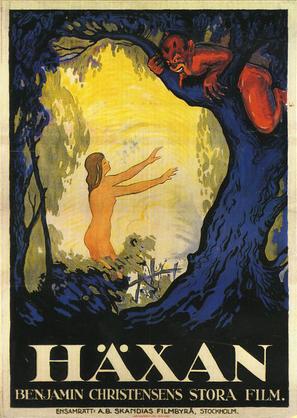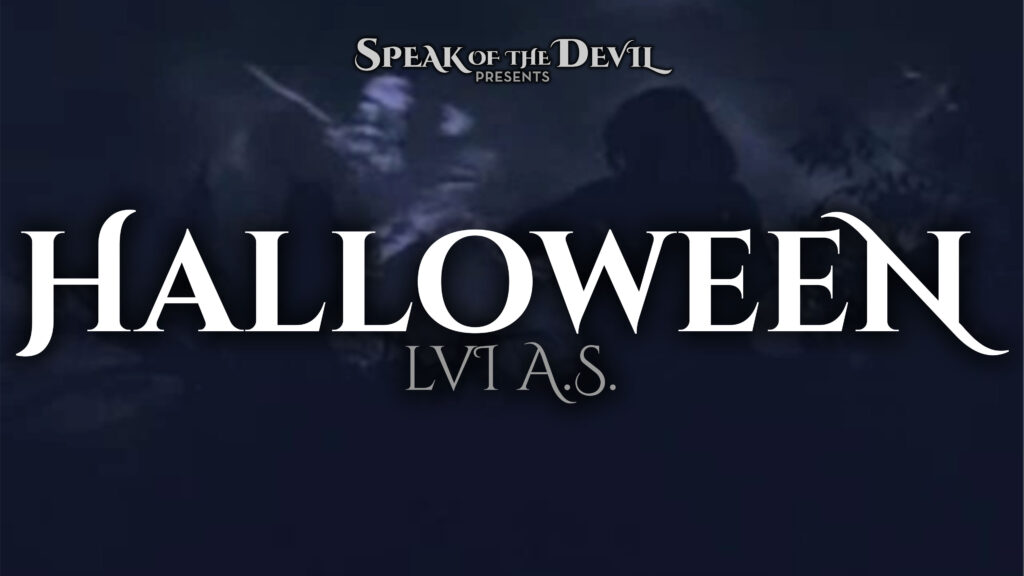Speak of the Devil presents – Halloween LVI A.S. In this episode we will watch the documentary/horror film Häxan: Witchcraft Through The Ages while Reverend Campbell reflects on his occult experiences throughout his youth prior to joining the Church of Satan.

- Häxan: Witchcraft Through The Ages (1922)
https://publicdomainreview.org/collection/haxan-witchcraft-through-the-ages-1922- Referred to in English as The Witches or Witchcraft Through the Ages, Häxan is a Swedish-Danish film, a curious and groundbreaking mix of documentary and silent horror cinema, written and directed by Benjamin Christensen. Whereas most films of the period were literary adaptations, Christensen’s take was unique, basing his film upon non-fiction works, mainly the Malleus Maleficarum, a 15th-century treatise on witchcraft he found in a Berlin bookshop, as well as a number of other manuals, illustrations and treatises on witches and witch-hunting (a lengthy bibliography was included in the original playbill at the film’s premiere). On literary adaptations Christensen commented: “In principal [sic] I am against these adaptations… I seek to find the way forward to original films.” Instead Häxan was envisaged, as stated in the opening credits, as a “presentation from a cultural and historical point of view in seven chapters of moving pictures”. While the bulk of the film’s format, with its dramatic scenes portrayed by actors (including Christensen himself in the role of the devil), would have been familiar enough to cinema-goers at the time (although shocking in content), the first chapter, lasting 13 minutes, is a different story. With its documentary style and scholarly tone — featuring a number of photographs of statuary, paintings, and woodcuts — it would have been entirely novel — a style of screened illustrated lecture which wouldn’t become popular till many years later. Indeed, the film perhaps could make a decent claim to being the first ever documentary (an accolade normally reserved for Robert J. Flaherty’s ethnographic study from 1922 titled Nanook of the North). Reportedly the most expensive film of the Swedish silent film era, Häxan was actually banned in the United States, and heavily censored in other countries. In 1968, an abbreviated version of the film was released. Titled Witchcraft Through the Ages, it featured an eclectic jazz score by Daniel Humair and dramatic narration by the wonderfully gravel-toned William S. Burroughs.
- https://en.wikipedia.org/wiki/H%C3%A4xan
- Part 1
- This geocentric model of the universe, similar to a model used in the film, depicts the Earth at the universe’s center, surrounded by layers of air and fire, the Solar System, the stars, and finally God with choirs of angels.
- A scholarly dissertation on the appearances of demons and witches in primitive and medieval culture, the first segment of the film uses a number of photographs of statuary, paintings, and woodcuts as demonstrative pieces. In addition, several large scale models are employed to demonstrate medieval concepts of the structure of the solar system and the commonly accepted depiction of Hell.
- Part 2
- The second segment of the film is a series of vignettes that theatrically demonstrate medieval superstition and beliefs concerning witchcraft, including Satan tempting a sleeping woman away from her husband’s bed before terrorizing a group of monks. Also shown is a woman purchasing a love potion from a supposed witch named Karna in order to seduce a monk, and a supposed witch named Apelone dreaming of waking up in a castle, where Satan presents her with coins that she is unable to hold on to and festivities that she is unable to participate in.
- Parts 3–5
- Set in the Middle Ages, this narrative is used to demonstrate the treatment of suspected witches by the religious authorities of the time. A printer named Jesper dies in bed, and his family consequently accuses an old woman, Maria the weaver, of causing his death through witchcraft. Jesper’s wife Anna visits the residence of traveling Inquisition judges, grasping one of their arms in desperation and asking that they try Maria for witchcraft.
- Maria is arrested, and after being tortured by inquisitors, admits to involvement in witchcraft. She describes giving birth to children fathered by Satan, being smeared with witch ointment, and attending a Witches’ Sabbath, where she claims witches and sorcerers desecrated a cross, feasted with demons, and kissed Satan’s buttocks. She “names” other supposed witches, including two of the women in Jesper’s household. Eventually, Anna is arrested as a witch when the inquisitor whose arm she grabbed accuses her of bewitching him. She is tricked into what is perceived as a confession, and is sentenced to be burned at the stake. Intertitles claim that over eight million women, men and children were burned as witches.[a]
- Parts 6–7
- The final segments of the film seek to demonstrate how the superstitions of old have become better understood. Christensen offers the threat of medieval torture methods as an explanation for why many supposed heretics confessed to being involved in witchcraft. Though he does not deny the existence of the Devil, Christensen claims that those accused of witchcraft may have been suffering from what are recognized in modern times as mental or neurological disorders. A nun named Sister Cecilia is depicted as being coerced by Satan into desecrating a consecrated host and stealing a statue of the infant Jesus. Her actions are then contrasted with vignettes about a somnambulist, a pyromaniac, and a kleptomaniac. It is suggested that such behaviors would have been thought of as demonically-influenced in medieval times, whereas modern societies recognize them as psychological ailments (referred to in the film as hysteria).
- Part 1

